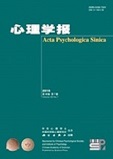Normative misperception refers to the cognitive bias between an individual’s normative perception and people’s true views of the behaviors or attitudes of others. The occurrence of normative misperception has been proven to be universal, and it occurs when people mistakenly estimate the benefit of a certain attitude and/or behavior. Scholars have begun to draw on normative misperception to explain humans’ social behavior. However, whether different types of norm misperception (behavioral vs. attitudinal misperception) have different effects on behavior, and whether different normative information (descriptive vs. injunctive normative information) diverges in alleviating the normative misperception and its influence on behavior remain unclear. We also ask whether the theory of impression management could be applied to normative misperception in exploring the psychological mechanism underlying its impact on behavior. The current study aims to address these issues with food waste in dining out as the target behavior.
Study 1 was a correlational study based a survey carried out among residents from six provinces situated in the western, central, and eastern regions of China. We measured the independent variables (behavioral misperception and attitudinal misperception), dependent variable (food wasting behavior during the most recent eating out), and mediators (three dimensions of impression evaluation: sociability, morality, and competence) with scales developed in previous literature. After excluding outliers and participants who failed the attention check question, we collected 957 valid data. In study 2, two two-factorial experiments (descriptive normative vs. non-normative information in experiment 1; injunctive normative vs. non-normative information in experiment 2) were conducted to test the effects of descriptive (injunctive) normative information on behavioral (attitudinal) misperception. We also ran bootstrap analysis separately for each set of data to determine the relationship among normative information, misperception, impression evaluation, and food wasting behavior.
The results of study 1 showed that participants tended to overestimate others’ food waste and their approval of wasteful behavior, and both misperceptions had significant positive effects on food waste, implying that these misperceptions not only exist, but also promote people’s food wasting behavior further. The t-test revealed a greater effect on attitudinal misperception as opposed to behavioral misperception on food waste. In addition, as speculated, the sociability dimension of impression evaluation mediated the relationship between both misperceptions and wasteful behavior, whereas the mediating role of morality and competence were not significant. In other words, because participants overestimated others’ wasteful behavior and their degree of approval, they worried that being too economical in public might be considered as being stingy or indecent, and this worry further bred wasteful behavior. Study 2 confirmed the difference between the mechanisms underlying the two types of normative information: descriptive normative information reduced the behavioral misperception itself, creating a new normative perception among the participants and prompting them to switch from complying with the original norm (people generally waste food) to adhering to the new one (people’s wasteful behavior is not as common as imagined), which mitigated misperception’s negative effect on wasteful behavior. On the contrary, injunctive normative information did not decrease the attitudinal misperception itself but rather moderated the relationship between the misperception and behavior: misperception still existed, but its prescriptive power declined.
The findings of this study highlight the importance of considering the distinction between the two types of normative misperception in social norm campaigns, and suggest two possible ways of correcting people’s normative misperception: providing descriptive normative information to decrease people’s behavioral misperception and providing injunctive normative information to ameliorate attitudinal misperception’s detrimental effect on behavior.




